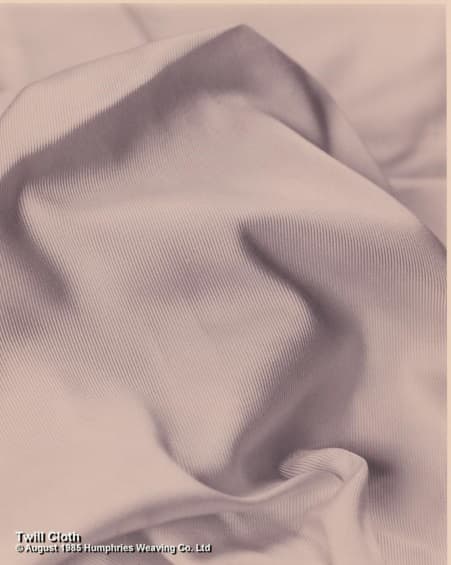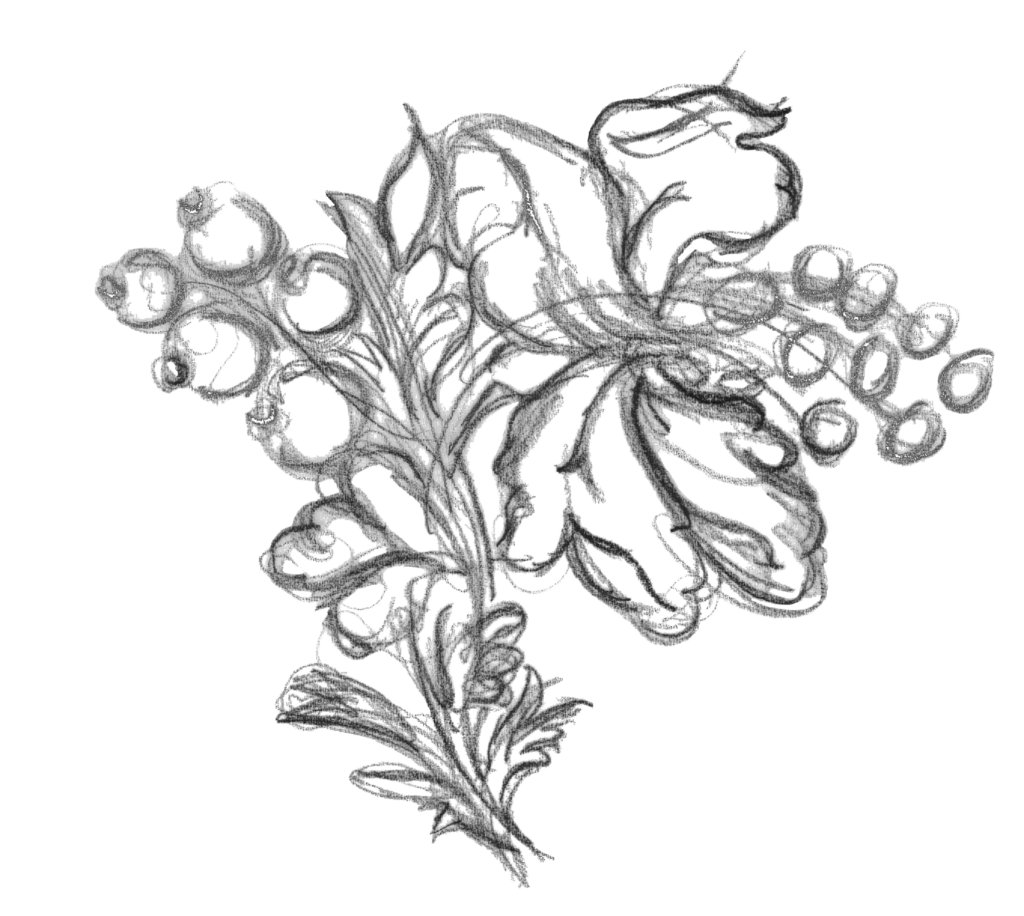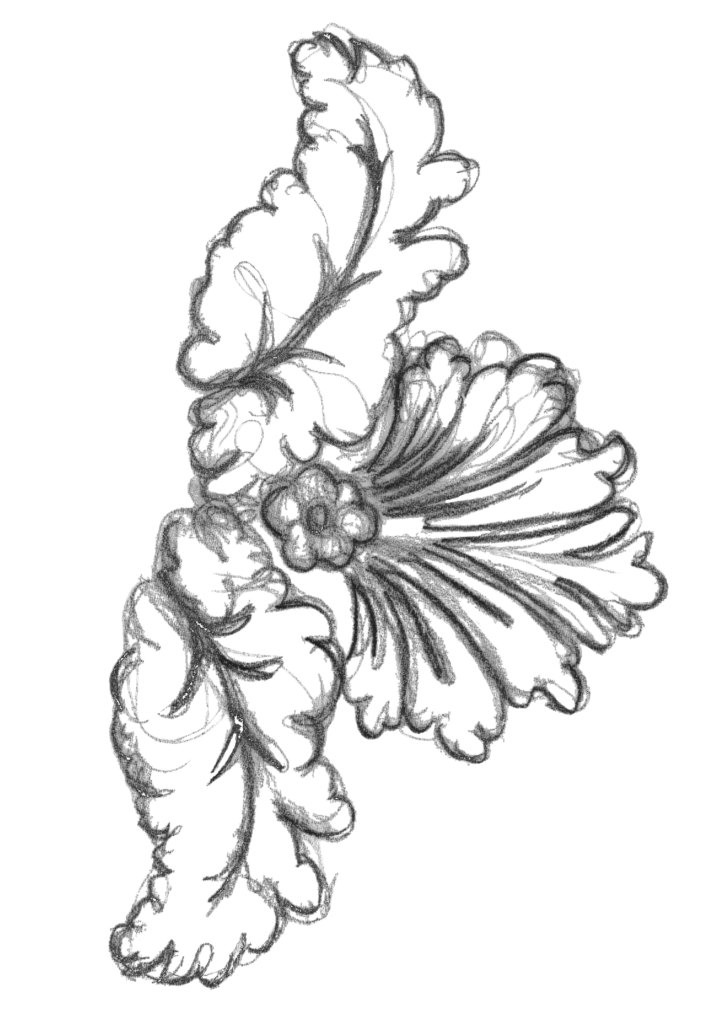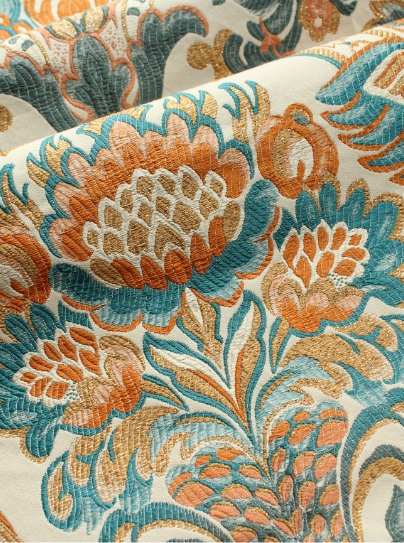Opus Anglicanum is the Latin phrase for ‘English Work’, used to describe the luxurious embroideries of silk, gold and silver; the most prized art forms in medieval Europe. This exhibition at the V&A showcases some of the oldest and most treasured embroideries. From chausable to Heraldic covering for horses the sheer detail, the precision and patience required to create these pieces of art is immense.
One of the first objects on show was a Cope Chest, a quadrant carved wooden box; these were often elaborate in appearance to reflect the value of its contents.
Many bishops and clergymen were buried in the ceremonial vestments and so many of the remaining fragments are on display today. It’s really quite amazing that these Opus Anglicanum pieces have survived so many centuries and the detailed stitching is still very evident today.
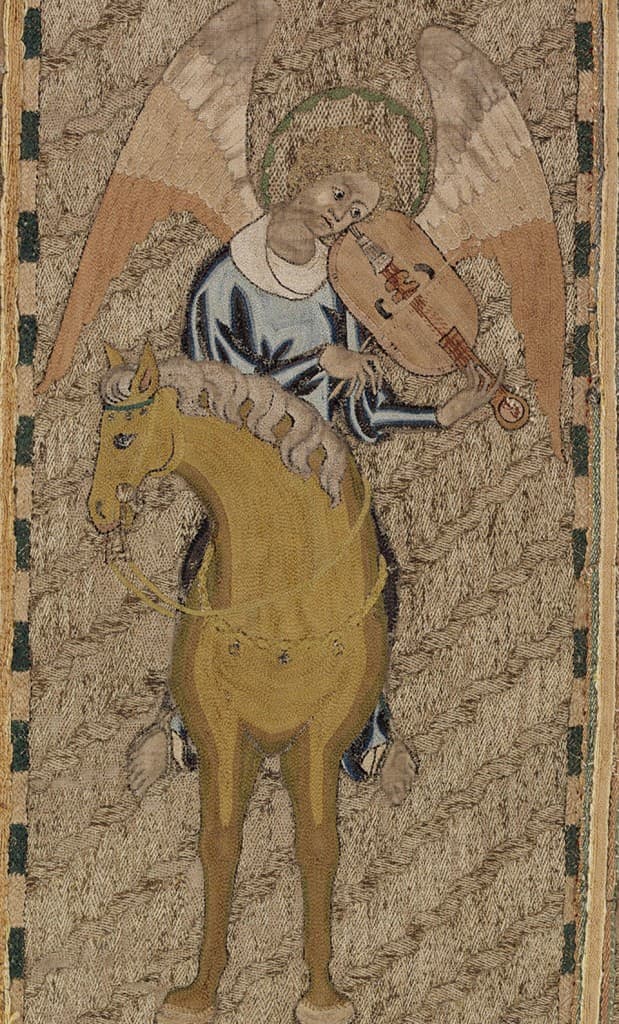
The Steeple Aston Cope 1310-40 – Photo Credit: The Rector and Churchwardens of St Peter and St Paul, Steeple Aston, Oxfordshire
In Medieval Europe embroidered textiles were indispensable symbols of wealth and power as a result of their required craftsmanship. The English embroiderers often mastered their skills in apprenticeships of up to 7 years. Embroidery was a highly effective way of creating heraldic decorations and textiles played such a key role in the hierarchy of the Royal Court. The techniques of embroidery were often quickened to meet the demands of the monarchy. Despite this, the position of Royal Armour was often held by an embroiderer.
One of the most striking Royal Court pieces of Opus Anglicanum was a Horse Trapper – such an ornate and decorative piece used to cover a horse. This heraldic covering is thought to have been made between 1330-1340 for King Edward III using surface couching and running stitch; quicker techniques than used on ecclesiastical work.
With much of the Opus Anglicanum holding theological messages, telling stories of prophets and important figures much of the English embroidery work was lost during the protestant reformation of the 16th Century. Some were taken apart to recover jewels and precious metals; others were hidden by Catholic families and taken to main land England whilst others were modified into different objects.
The Tree of Jesse Cope & Humphries Weaving
Made in London between 1310 and 1325, the Jesse Cope is one of the lasting examples of Opus Anglicanum. Although not much is known about the origin of the Jesse Cope, it is evident that it was cut up into smaller pieces at some point but has been reconstructed to show the Tree of Jesse – used as a visual to illustrate Christ’s lineage.
The prophet Jesse is shown asleep at the base of the design with a golden vine growing from his side. The vine grows upwards to cover the Cope illustrating the ancestors of Christ.
The original piece was embroidered onto a silk twill background and so in 1986 the V&A decided to reconstruct the fragments of the Cope and approached Humphries Weaving to replicate the original twill ground cloth of silk in a crimson tone.
Stability and structure are important in the choice of base cloths for embroidery as the continuous pulling of the decorative threads used in the borderer’s needle, gradually builds to pull away the weave structure, to cause the base cloth to buckle under the tension. The use of the twill structure enhances the drape of the Cope as the structure allows for movement within the weave itself. The choice of a 3/1 twill dictates that there is a face cloth using the warp ends to give a heavier twill line pronounced on the face. This weave would have been straight forward in the 14th Century, but the execution of the weaving of it to perfection would have demanded craftsmen to adapt to the handling of silk organzine warps, to make plain work as this was known to the standard required.
In July 1986 the V&A decided to remount the fragments to some idea of what the cope would have looked like in the 14th Century. The original twill ground cloth was of silk in a crimson tone. The museum decided to dye the cloth themselves as researched showed the fabric would have been dyed in this way. The analysis of the base cloth showed that organzine silk was used in both warp and weft. This choice of yarn would have offered a fair amount of sheen to the surface and yet with the moderately high twist pf the continuous filament silk, the cloth itself would have a good tensile strength in both directions.
The fabric was hand-woven on an early 19th Century Spitafield loom at the Humphries Weaving mill, Castle Hedingham, and dyed to the required shade by the V&A conservation department. The embroidery was then painstakingly remounted onto the cloth, giving an impression of the original textile.
Opus Anglicanum are masterpieces of English embroidery and a glimpse into the craftsmanship required to create such elaborate ceremonial vestments and Royal garments, a skill that would rarely be seen today, but was of such importance to the church and monarchy.
